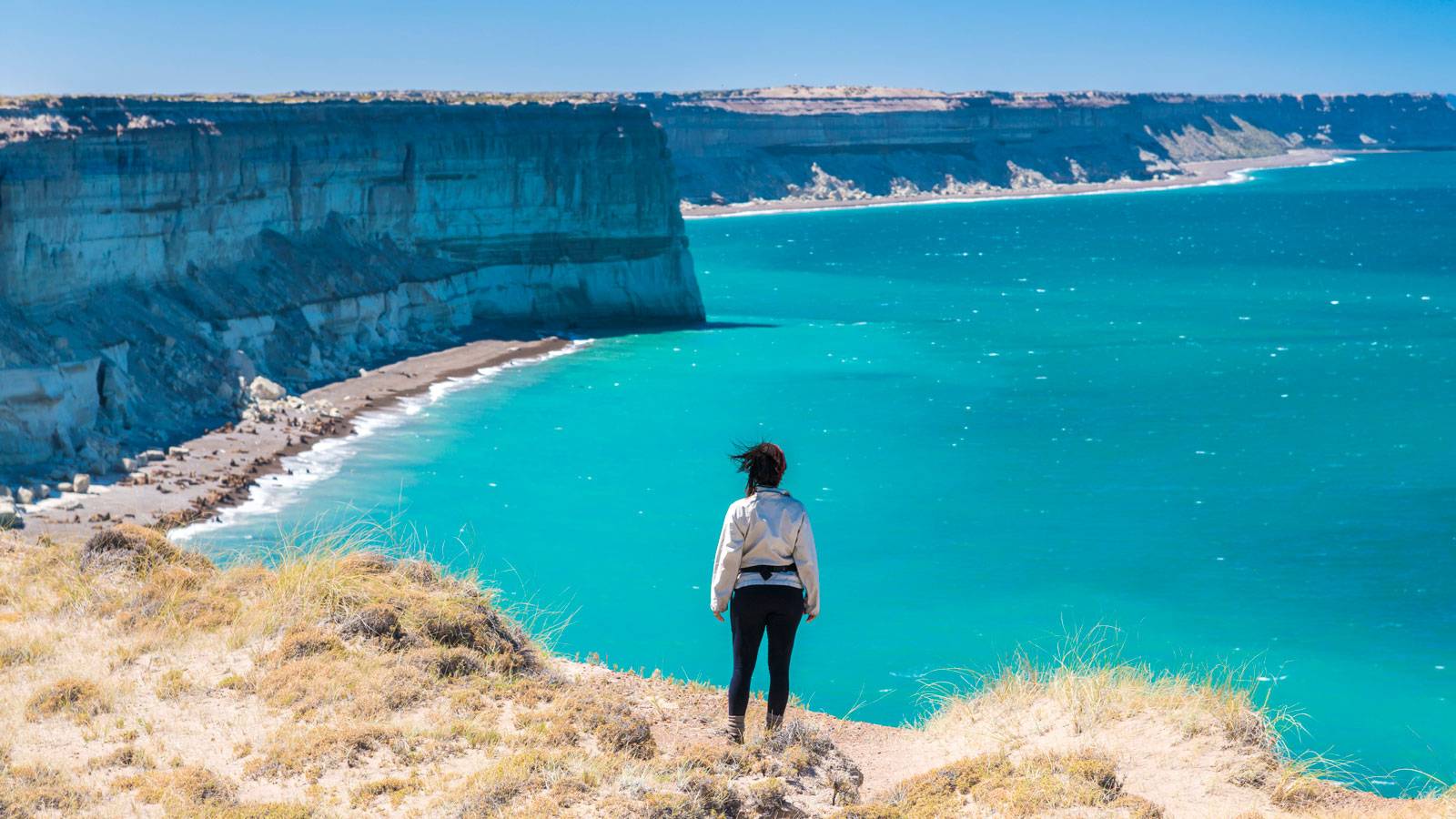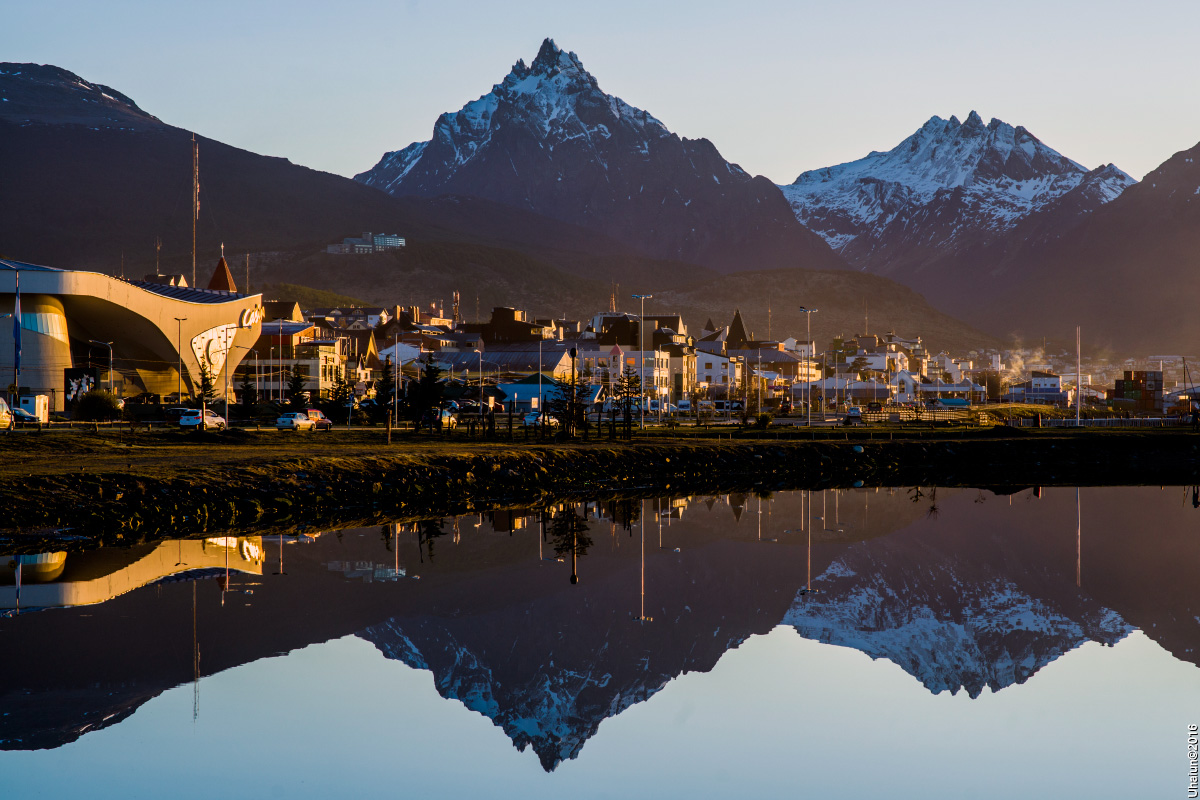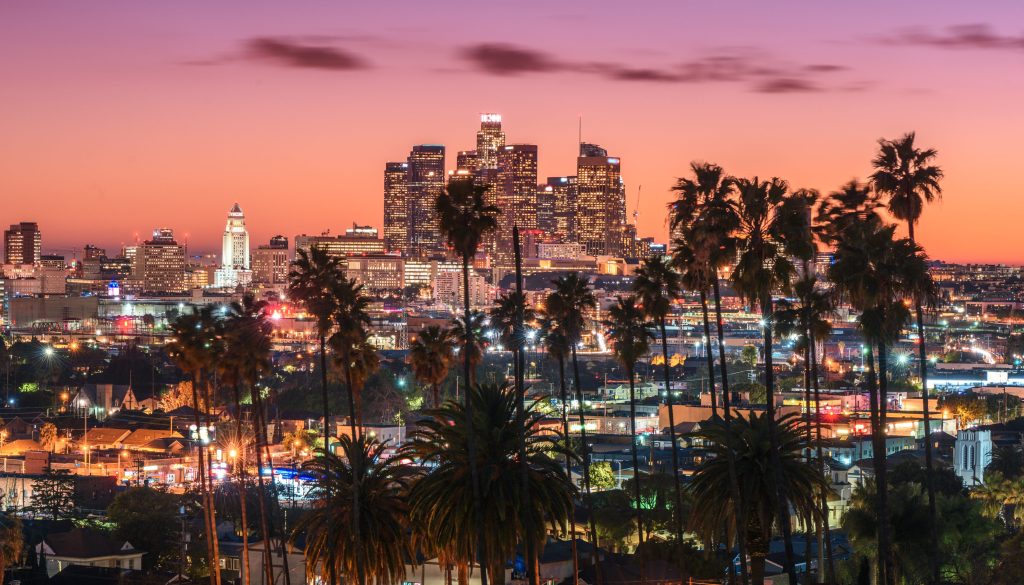

| Cruise Region : South America / Antarctica |
| Company Category : Premium |
| Company name : Princess Cruises |
| Ship name : Royal Princess |
| Journey Start Date : Thu 21 Feb 2019 |
| Journey End Date : Sat 23 Mar 2019 |
| Port start : Buenos Aires / Argentina |
| Port end : Los Angeles / USA |
| Count Nights : 30 nights |
| Day | Port | Date | Arrival | Departure |
|---|---|---|---|---|
| 1 | Buenos Aires / Argentina | Thu 21 Feb | ||
| 2 | Buenos Aires / Argentina | Fri 22 Feb | 13:00 | |
| 3 | Day at sea / Sea | Sat 23 Feb | ||
| 4 | Puerto Madryn / Argentina | Sun 24 Feb | 09:00 | 18:00 |
| 5 | Day at sea / Sea | Mon 25 Feb | ||
| 6 | Port Stanley, Falkland Islands / Falkland islands | Tue 26 Feb | 08:00 | 18:30 |
| 7 | Cape Horn / Chile | Wed 27 Feb | 17:00 | 18:00 |
| 8 | Ushuaia / Argentina | Thu 28 Feb | 07:00 | 16:00 |
| 9 | Punta Arenas / Chile | Fri 01 Mar | 08:00 | 20:00 |
| 10 | Amalia glacier / Chile | Sat 02 Mar | 16:00 | 17:00 |
| 11 | Day at sea / Sea | Sun 03 Mar | ||
| 12 | Puerto Chacabuco / Chile | Mon 04 Mar | 07:00 | 17:00 |
| 13 | Puerto Montt / Chile | Tue 05 Mar | 08:00 | 18:00 |
| 14 | Day at sea / Sea | Wed 06 Mar | ||
| 15 | Santiago / Chile | Thu 07 Mar | 05:00 | 18:00 |
| 16 | La Serena / Chile | Fri 08 Mar | 07:00 | 18:00 |
| 17 | Day at sea / Sea | Sat 09 Mar | ||
| 18 | Day at sea / Sea | Sun 10 Mar | ||
| 19 | Pisco / Peru | Mon 11 Mar | 04:00 | 17:00 |
| 20 | Lima / Peru | Tue 12 Mar | 05:00 | |
| 21 | Lima / Peru | Wed 13 Mar | 10:00 | |
| 22 | Day at sea / Sea | Thu 14 Mar | ||
| 23 | Day at sea / Sea | Fri 15 Mar | ||
| 24 | Puntarenas / Costa Rica | Sat 16 Mar | 07:00 | 19:00 |
| 25 | San Juan del Sur / Nicaragua | Sun 17 Mar | 07:00 | 17:00 |
| 26 | Day at sea / Sea | Mon 18 Mar | ||
| 27 | Day at sea / Sea | Tue 19 Mar | ||
| 28 | Puerto Vallarta / Mexico | Wed 20 Mar | 12:00 | 20:00 |
| 29 | Day at sea / Sea | Thu 21 Mar | ||
| 30 | Day at sea / Sea | Fri 22 Mar | ||
| 31 | Los Angeles / USA | Sat 23 Mar | 06:15 |
| Build Year : 2013 |
| Width : 38.00 |
| Length : 330.00 |
| Capacity : 3560 |
| Deck Quantity : 19 |
| Cabin Quantity : 1780 |
| Restaurant Quantity : 15 |
| Lift Quantity : 5 |
| Balancer : Yes |

the capital city and chief port of Argentina, in the eastern central part of the country, on the Plata River; population 3,042,600 (est. 2008).

the capital city and chief port of Argentina, in the eastern central part of the country, on the Plata River; population 3,042,600 (est. 2008).


В западной части Аргентины расположен замечательный городок Пуэрто-Мадрин с населением менее 60 000 человек. Здесь Вы сможете понаблюдать за удивительными существами: китами, дельфинами, морскими львами и пингвинами. Это возможно благодаря расположению города вблизи полуострова Вальдес. Пуэрто-Мадрин не оставит равнодушными и любителей дайвинга и виндсерфинга. Также Вы получите возможность порыбачить в океане и отведать удивительную богатейшую аргентинскую кухню, которая является раем для мясоедов. Национальное блюдо Аргентины — parrilla представляет собой смесь из стейка, сосисок, мясных потрохов и все это изобилие готовится на гриле.


Stanley is the capital of the Falkland Islands. It is located on the island of East Falkland, on a north-facing slope in one of the wettest parts of the islands. At the 2016 census, the town had a population of 2,460 the entire population of the Falkland Islands was 3,398 on Census Day on 9 October 2016
Stanley is represented by five members of the Legislative Assembly of the Falkland Islands, currently Stacy Bragger, Barry Elsby, Mark Pollard, Roger Spink and Leona Vidal Roberts.
Stanley is the main shopping centre on the islands and the hub of East Falkland's road network. Attractions include the Falkland Islands Museum, Government House – built in 1845 and home to the Governor of the Falkland Islands – and a golf course, as well as a whale-bone arch, a totem pole, several war memorials and the shipwrecks in its harbour. The Falkland Islands Company owns several shops. Stanley has four pubs, 11 hotels and guesthouses, three restaurants, a fish and chip shop and the main tourist office. There are three churches, including the Anglican Christ Church Cathedral, the southernmost Anglican cathedral in the world, and the Roman Catholic St. Mary's Church. A bomb disposal unit in the town is a legacy of the Falklands War.
The town hall serves as a post office, philatelic bureau, law court and dance hall. The police station also contains the islands' only prison, with a capacity of 13 in the cells.
The community centre includes a swimming pool (the only public one in the islands), a sports centre, library, and school. A grass football pitch is located by the community centre and hosts regular games.
Stanley Racecourse, located on the west side of Stanley, holds a two-day horse racing meeting every year on 26 and 27 December. The Christmas races have been held here for over 100 years.
Stanley Golf Course has an 18-hole course and a club house. It is also located to the west of Stanley.
King Edward VII Memorial Hospital is the islands' main hospital, with doctors' practice and surgery, radiology department, dental surgery and emergency facilities.
Several bus and taxi companies operate out of Stanley.
Stanley is also home to the Falkland Islands Radio Station (FIRS), the Stanley office of the British Antarctic Survey, and the office of the weekly Penguin News newspaper.
A nursery and garden centre is also here, in whose greenhouses some of the islands' vegetables are grown.

Cape Horn is the southernmost headland of the Tierra del Fuego archipelago of southern Chile, and is located on the small Hornos Island. Although not the most southerly point of South America (which are the Diego Ramírez Islands), Cape Horn marks the northern boundary of the Drake Passage and marks where the Atlantic and Pacific Oceans meet.
Cape Horn was discovered and first rounded in 1616 by the Dutchman Willem Schouten, who named it Kaap Hoorn after the city of Hoorn in the Netherlands. For decades, Cape Horn was a major milestone on the clipper route, by which sailing ships carried trade around the world. The waters around Cape Horn are particularly hazardous, owing to strong winds, large waves, strong currents and icebergs; these dangers have made it notorious as a sailors' graveyard.
The need for boats and ships to round Cape Horn was greatly reduced by the opening of the Panama Canal in August 1914. However, sailing around the Cape Horn is still widely regarded as one of the major challenges in yachting. Thus a few recreational sailors continue to sail this route, sometimes as part of a circumnavigation of the globe. Almost all of these choose routes through the channels to the north of the Cape. (Many take a detour through the islands and anchor to wait for fair weather to visit Horn Island, or sail around it to replicate a rounding of this historic point.) Several prominent ocean yacht races, notably the Volvo Ocean Race, the VELUX 5 Oceans, and the Vendée Globe, sail around the world via the Horn. Speed records for round-the-world sailing are recognized for following this route.

Ushuaia is the capital of Tierra del Fuego, Antártida e Islas del Atlántico Sur Province, Argentina. It is commonly regarded as the southernmost city in the world. Ushuaia is located in a wide bay on the southern coast of Isla Grande de Tierra del Fuego, bounded on the north by the Martial mountain range, and on the south by the Beagle Channel. It is the only municipality in the Department of Ushuaia, which has an area of 9,390 km2 (3,625 sq mi). It was founded October 12 of 1884 by Augusto Lasserreand is located on the shores of the Beagle Channel surrounded by the mountain range of the Martial Glacier, in the Bay of Ushuaia. Besides being an administrative center, it is a light industrial port and tourist hub.







Santiago, is the capital and largest city of Chile as well as one of the largest cities in the Americas. It is the center of Chile's largest and most densely populated conurbation, the Santiago Metropolitan Region, whose total population is 7 million. The city is entirely located in the country's central valley. Most of the city lies between 500 m (1,640 ft) and 650 m (2,133 ft) above mean sea level.
Founded in 1541 by the Spanish conqueror Pedro de Valdivia, Santiago has been the capital city of Chile since colonial times. The city has a downtown core of 19th-century neoclassical architecture and winding side-streets, dotted by art deco, neo-gothic, and other styles. Santiago's cityscape is shaped by several stand-alone hills and the fast-flowing Mapocho River, lined by parks such as Parque Forestal. The Andes Mountains can be seen from most points in the city. These mountains contribute to a considerable smog problem, particularly during winter. The city outskirts are surrounded by vineyards and Santiago is within an hour of both the mountains and the Pacific Ocean.

La Serena is a city and commune in northern Chile, capital of the Coquimbo Region. Founded in 1544, it is the country's second oldest city after the national capital, Santiago, located 471 km (293 miles) to the north. It has a communal population of 198,164 (2012 census, and 400,000 for the Greater La Serena) area, the country's fourth largest conurbation (pop. 300,000, 2002 census), which includes nearby Coquimbo with an area of 1,892.80 square kilometres (730.81 sq mi). It is one of the fastest-growing areas of Chile, witnessing a population increase of 32.6% between 1992 and 2002.
The city is an important tourist destination, especially during the summer, where people go to visit the beaches. It is in the headquarters of the University of La Serena and also is home to the Roman Catholic Archdiocese of La Serena, one of five Catholic Archdioceses of the Catholic Church in Chile.




Lima is the capital and the largest city of Peru. It is located in the valleys of the Chillón, Rímac and Lurín rivers, in the central coastal part of the country, overlooking the Pacific Ocean. Together with the seaport of Callao, it forms a contiguous urban area known as the Lima Metropolitan Area. With a population of more than 9 million, Lima is the most populous metropolitan area of Peru and the third-largest city in the Americas (as defined by "city proper"), behind São Paulo and Mexico City.
Lima was founded by Spanish conquistador Francisco Pizarro on January 18, 1535, as Ciudad de los Reyes. It became the capital and most important city in the Viceroyalty of Peru. Following the Peruvian War of Independence, it became the capital of the Republic of Peru. Around one-third of the national population lives in the metropolitan area.

Lima is the capital and the largest city of Peru. It is located in the valleys of the Chillón, Rímac and Lurín rivers, in the central coastal part of the country, overlooking the Pacific Ocean. Together with the seaport of Callao, it forms a contiguous urban area known as the Lima Metropolitan Area. With a population of more than 9 million, Lima is the most populous metropolitan area of Peru and the third-largest city in the Americas (as defined by "city proper"), behind São Paulo and Mexico City.
Lima was founded by Spanish conquistador Francisco Pizarro on January 18, 1535, as Ciudad de los Reyes. It became the capital and most important city in the Viceroyalty of Peru. Following the Peruvian War of Independence, it became the capital of the Republic of Peru. Around one-third of the national population lives in the metropolitan area.



Puntarenas is the capital and largest city in the Province of Puntarenas, on the Pacific coast of Costa Rica.

San juan del sur



Puerto Vallarta is a Mexican beach resort city situated on the Pacific Ocean's Bahía de Banderas. PV or simply Vallarta is the second largest urban agglomeration in the state after the Guadalajara Metropolitan Area. The City of Puerto Vallarta is the government seat of the Municipality of Puerto Vallarta which comprises the city as well as population centers outside of the city extending from Boca de Tomatlán to the Nayarit border (the Ameca River). The city is located at 20°40′N 105°16′W. The municipality has an area of 1,300.7 square kilometres (502.19 sq mi). To the north it borders the southwest part of the state of Nayarit. To the east it borders the municipality of Mascota and San Sebastián del Oeste, and to the south it borders the municipalities of Talpa de Allende and Cabo Corrientes.
Puerto Vallarta is named after Ignacio Vallarta, a former governor of Jalisco. In Spanish, Puerto Vallarta is frequently shortened to "Vallarta", while English speakers call the city P.V. for short. In internet shorthand the city is often referred to as PVR, after the International Air Transport Association airport code for its Gustavo Diaz Ordaz International Airport.



Los Angeles officially the City of Los Angeles and often known colloquially by its initials L.A., is the most populous city in California and the second most populous city in the United States, after New York. With an estimated population of four million, Los Angeles is the cultural, financial, and commercial center of Southern California. Nicknamed the "City of Angels" partly because of its name's Spanish meaning, Los Angeles is known for its Mediterranean climate, ethnic diversity, Hollywood, and the entertainment industry, and sprawling metropolis.
Los Angeles is in a large basin bounded by the Pacific Ocean on one side and by mountains as high as 10,000 feet (3,000 m) on the others. The city proper, which covers about 469 square miles (1,210 km2), is the seat of Los Angeles County, the most populated county in the country. Los Angeles is also the principal city of the Los Angeles metropolitan area, the second largest in the United States after that of New York City, with a population of 13.1 million. It is part of the Los Angeles-Long Beach combined statistical area, also the nation's second most populous area with a 2015 estimated population of 18.7 million.
Los Angeles is one of the most substantial economic engines within the United States, with a diverse economy in a broad range of professional and cultural fields. Los Angeles is also famous as the home of Hollywood, a major center of the world entertainment industry. A global city, it has been ranked 6th in the Global Cities Index and 9th in the Global Economic Power Index. The Los Angeles combined statistical area also has a gross metropolitan productof $831 billion (as of 2008), making it the third-largest in the world, after the Tokyo and New York metropolitan areas. Los Angeles hosted the 1932 and 1984 Summer Olympics and will host the event for a third time in 2028. The city also hosted the Miss Universe pageant twice, in 1990 and 2006, and was one of 9 American cities to host the 1994 FIFA men's soccer World Cup and one of 8 to host the 1999 FIFA women's soccer World Cup, hosting the finalmatch for both tournaments.
Historically home to the Chumash and Tongva, Los Angeles was claimed by Juan Rodríguez Cabrillo for Spain in 1542 along with the rest of what would become Alta California. The city was officially founded on September 4, 1781, by Spanish governor Felipe de Neve. It became a part of Mexico in 1821 following the Mexican War of Independence. In 1848, at the end of the Mexican–American War, Los Angeles and the rest of California were purchased as part of the Treaty of Guadalupe Hidalgo, becoming part of the United States. Los Angeles was incorporated as a municipality on April 4, 1850, five months before California achieved statehood. The discovery of oil in the 1890s brought rapid growth to the city. The completion of the Los Angeles Aqueduct in 1913, delivering water from Eastern California, later assured the city's continued rapid growth.